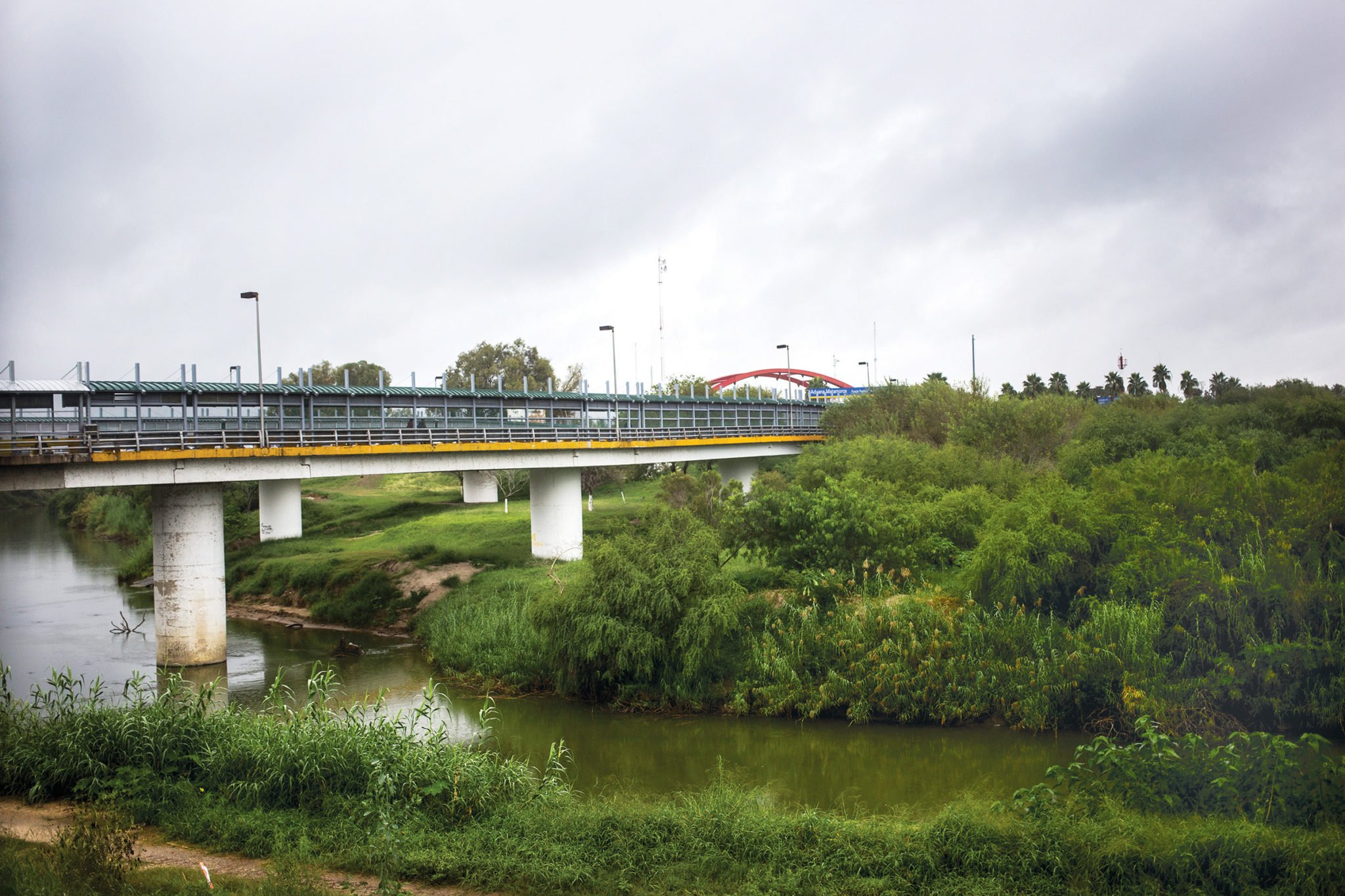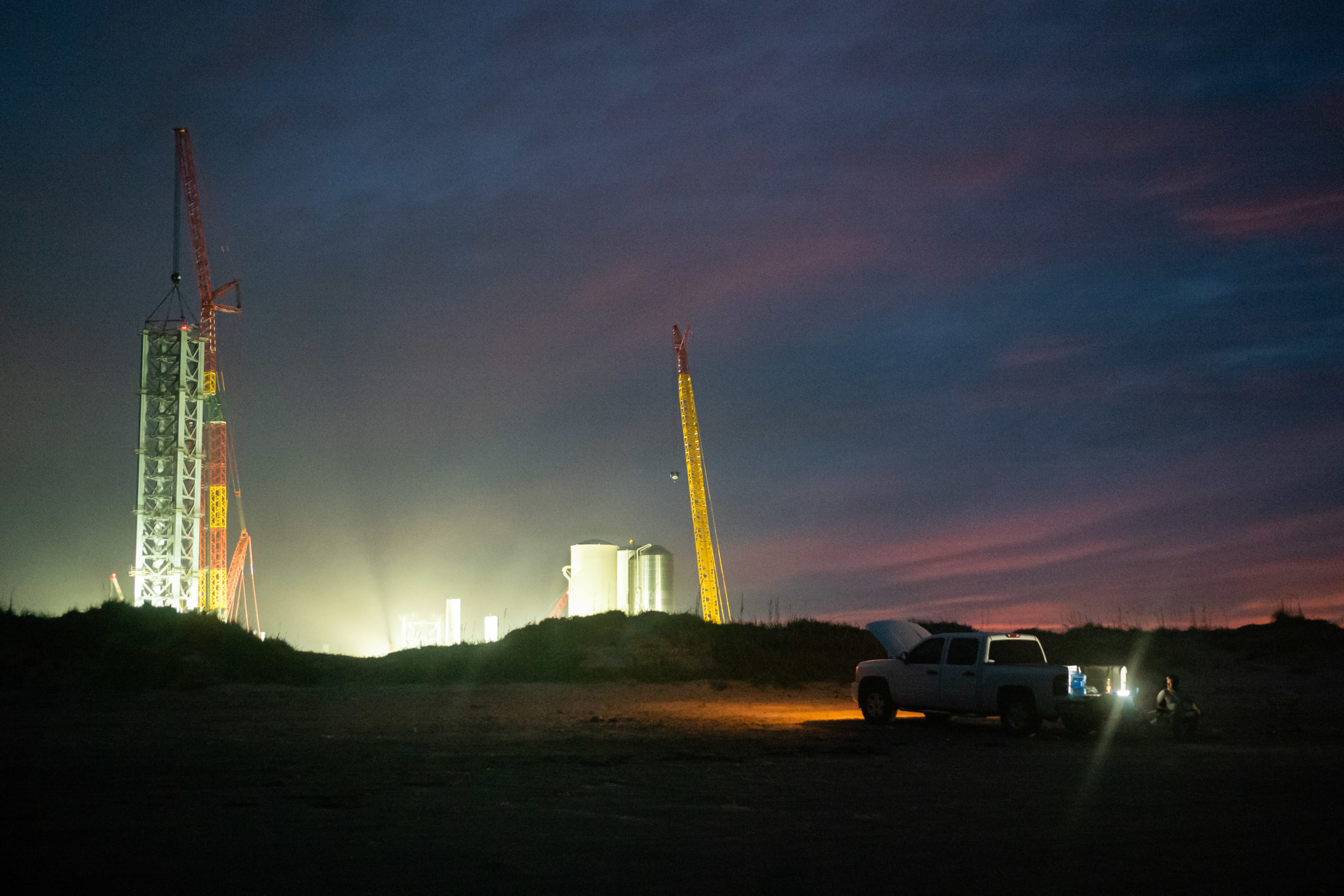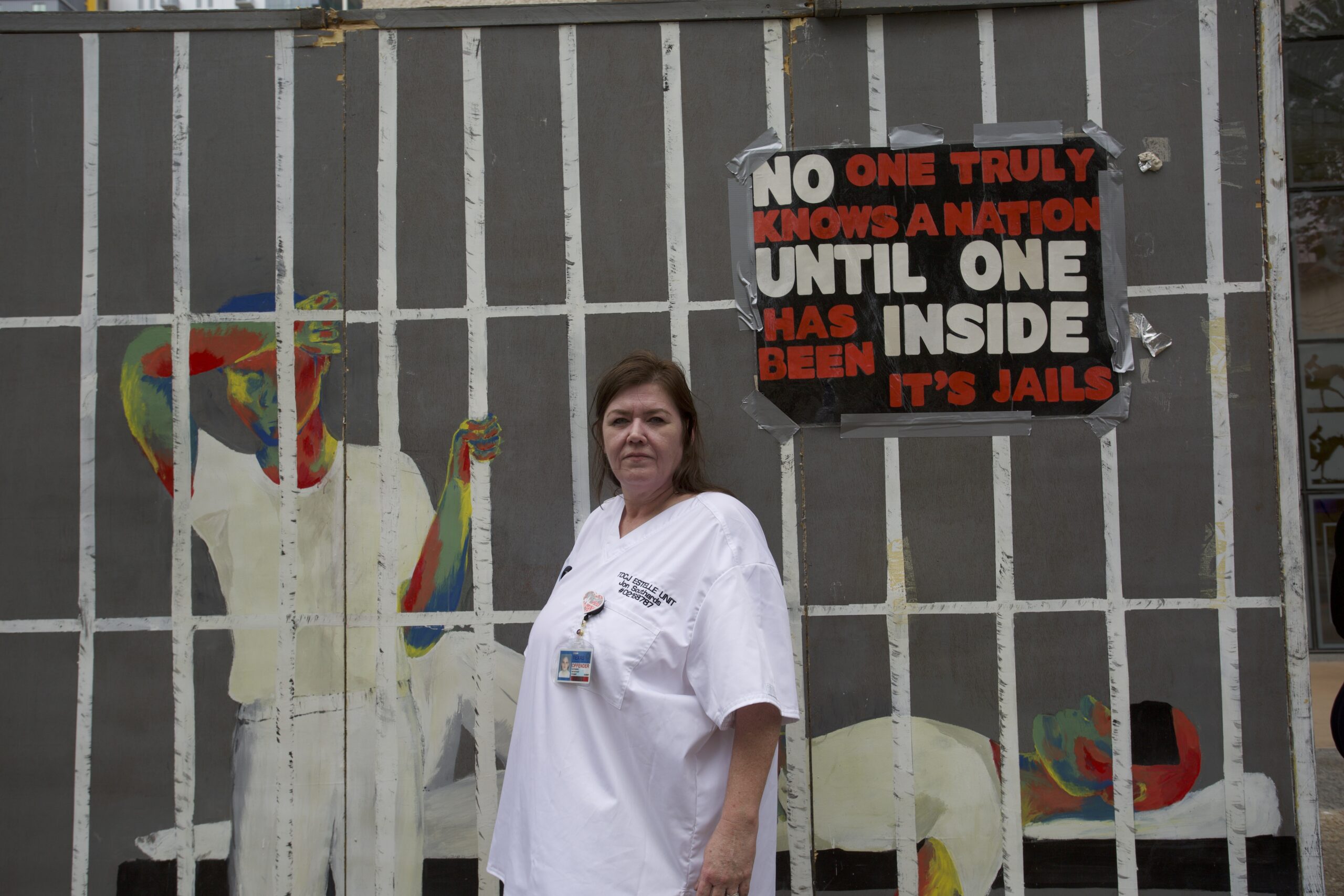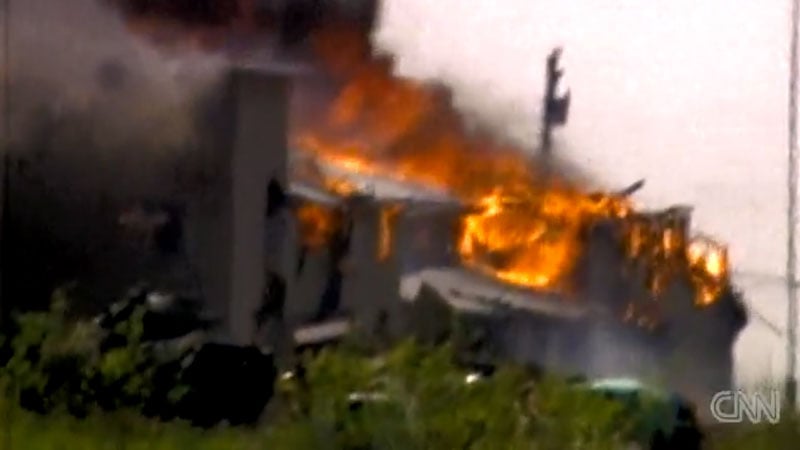
The Standoff in Waco
Twenty years on, the 51-day siege at the Branch Davidian compound and the tragedy that followed still haunts those who were there.

The Standoff in Waco
The 51-day siege at the Branch Davidian compound and the tragedy that followed still haunts those who were there.
–
by Alex Hannaford
April 18, 2013
In the spring of 1993, the Branch Davidian Christian sect gained worldwide notoriety when agents from the government’s Bureau of Alcohol, Tobacco and Firearms (ATF) attempted to execute a search warrant on its compound a few miles outside Waco. The ATF was investigating allegations of illegal weapons hoarding. On Sunday, February 28, a fierce two-hour gun battle took place leaving six Davidians and four ATF agents dead.
A 51-day standoff ensued. Amid the siege, the Branch Davidians’ charismatic leader, Vernon Howell, a 33-year-old musician who believed himself to be the final prophet in Christian end-times eschatology and went by the name David Koresh, asked for one of his sermons to be broadcast on a national radio station in return for giving himself up to FBI agents. The surrender never happened. Though a number of Davidians left the compound during the siege, dozens remained inside, and on April 19, more than 80 of them, including 17 children, perished in a fire that engulfed the complex. The television footage was beamed around the world.
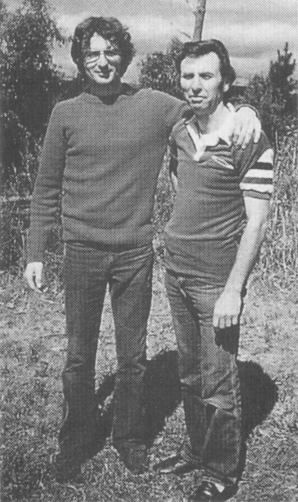
The Branch Davidians sprang out of the Davidian Seventh Day Adventist church – which itself had emerged out of the Seventh-day Adventists in the 1930s. The Davidian church was started by a Bulgarian immigrant named Victor Houteff who believed he had the gift of prophecy and wanted to reform the Seventh-day Adventist movement. After Houteff’s death in 1955, there was a schism in the Davidian church, and a man named Benjamin Roden formed the Branch Davidians in Waco. Both the Davidians and Branch Davidians believe we are living in a time of final judgment, that we are about to witness the imminent Second Coming of Christ.
After Roden died in 1978, his wife Lois took over, claiming to have a message of her own—that the Holy Spirit is feminine in gender—and rebuffed an attempt by her son George to assume the leadership. Vernon Howell appeared on the scene in 1981, but it wasn’t until 1983 that many in the group accepted his message that he was an end-time prophet. By the time Lois Roden died in 1986, Howell had taken over and re-named himself David Koresh.
One of Koresh’s followers was Clive Doyle, an Australian who joined the Branch Davidians in 1964 under Ben Roden. On April 19, 1993, Doyle escaped from the fire at the Mt. Carmel Center with severe burns to his hands and body; his 18-year-old daughter, Shari, perished.
Koresh urged Ofelia Santoyo, another member, to leave during the 51-day standoff to look after her elderly mother. But Santoyo’s daughter and five grandchildren were killed in the blaze.
Byron Sage, an FBI agent, had the unenviable task of negotiating with Koresh throughout the entire siege.
Four months after the fire, a federal grand jury indicted 12 of the surviving Branch Davidians for aiding and abetting the murder of federal officers and unlawful possession of firearms.
Ofelia Santoyo was never charged with an offense. Charges against one of the Davidians were dropped before the trial, and four others—including Clive Doyle—were acquitted. The remaining eight Davidians were convicted of firearms-related offenses but acquitted of murder. By 2007, all of them had been released from prison.
The cause of the fire is still disputed. In 1999, then-Attorney General Janet Reno appointed U.S. Sen. John Danforth to investigate the events of 1993. His investigation lasted 14 months and cost about $17 million. In his report, Danforth wrote that the government “did not cause the fire” and “did not direct gunfire at the Branch Davidian complex.” Responsibility for the tragedy, he wrote, “rests with certain of the Branch Davidians and their leader, Vernon Howell, also known as David Koresh.” But he did note that “certain FBI and Department of Justice officials failed to disclose … evidence and information about the use of pyrotechnic tear gas rounds until August 1999. This failure resulted from a combination of the inappropriate handling of evidence and the dereliction of duty.”
Here, survivors Clive Doyle and Ofelia Santoyo, both of whom still live in Waco, and former FBI agent Byron Sage, recount the events of 1993.
Clive Doyle
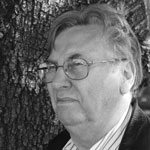 It was not a completely self-sufficient group. We made efforts from time to time to grow our own crops, but we didn’t grow all our own food. We didn’t make our own clothes. A lot of people get this idea that if you’re in a commune or if you belong to a “cult,” as they called us, that you’re kind of a prisoner. But over the years, people went to work downtown … a lot of them were sent off to California or somewhere else. The idea was with new people coming in all the time, there would be means to feed them, take care of them and so forth.
It was not a completely self-sufficient group. We made efforts from time to time to grow our own crops, but we didn’t grow all our own food. We didn’t make our own clothes. A lot of people get this idea that if you’re in a commune or if you belong to a “cult,” as they called us, that you’re kind of a prisoner. But over the years, people went to work downtown … a lot of them were sent off to California or somewhere else. The idea was with new people coming in all the time, there would be means to feed them, take care of them and so forth.
I was one of the ones who went out to California: I worked for the government on the census in 1990; I also worked with a gardening crew at one point. The last job I had was at a company mass-producing educational videos.
When people would come visit (and people were coming in from England and other countries), they might stay there for a week or so, and they’d say they had to go. So [Koresh would] say “well, you really haven’t heard enough yet. Couldn’t you stay longer? … what would it take for you to stay two more weeks … what if we paid your rent or car payment.” And those offers were met. They weren’t prisoners, but the idea was you needed to know more before you’d take off.
Life at Mt. Carmel over the years, even though it was communal, wasn’t like a monastery or a convent.
Ofelia Santoyo
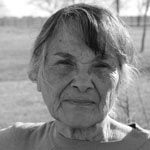
In the morning when we got up, we’d wash up and then run to hear David’s studies. We used to have long, long studies. Sometimes we’d miss lunch. Sometimes we’d miss breakfast or dinner because the studies were so long. I enjoyed them. But I didn’t understand much. I was born in California, but I was brought up in Chihuahua City, Mexico. I was at Mt. Carmel with my mother, Concepcion Acuna. My daughter Juliette didn’t come with us at first; she came later. I used to do the cooking. I used to cook baked chicken, eggplant. Some of the people there even took the recipe back to England when they went to visit. They used to love my eggplant.
Clive
 Many of the houses on the property needed roofs. A lot of them had busted doors and windows so we made an effort to fix them up. Finally, David realized that we were sinking a lot of money in but barely making them livable. The chapel that used to be up near the front gate was in bad shape. Its foundations were cracking so we dismantled it, and we used the lumber from that and the various houses to build a place (for us all to live in), and it kind of evolved depending on the need. We built a chapel, and one time when I came back from California they had built a gymnasium on the north end of the building. So many people came that eventually David told us to subdivide the gym and convert it into dormitory rooms.
Many of the houses on the property needed roofs. A lot of them had busted doors and windows so we made an effort to fix them up. Finally, David realized that we were sinking a lot of money in but barely making them livable. The chapel that used to be up near the front gate was in bad shape. Its foundations were cracking so we dismantled it, and we used the lumber from that and the various houses to build a place (for us all to live in), and it kind of evolved depending on the need. We built a chapel, and one time when I came back from California they had built a gymnasium on the north end of the building. So many people came that eventually David told us to subdivide the gym and convert it into dormitory rooms.
In 1992 David made a general call [for followers]. He went to England and Hawaii. He went to Australia three times. He went to Israel three times. But he also traveled around the United States, meeting with people who knew him through the Seventh Day Adventist church.
According to the law of Moses … God required that everybody come for three major feasts, three times a year … and David stressed that it was important that people come and hear what he had to say. Most of the people ended up staying. The majority of them were still there a year later in ’93. There were a lot of ominous things happening. The whole time we’d had our sights on going to Israel because we believed God was going to set up a kingdom there, … but I remember toward the latter part of [Koresh’s] ministry … he began to change the focus, saying “We may not get to Israel before persecution starts.”
There were signs of certain things developing. A few months before the raid, Randy Weaver’s family were surrounded and attacked in Idaho. Some of his family were killed by the ATF [the Ruby Ridge stand-off happened in 1992]. We had a bulletin board in the hallway, just down near the front door, and they put a newspaper cutting up about the Randy Weaver thing. There was a lot of talk on the news about assault weapons being banned and this gun dealer that David had met and who was coming to Bible studies was saying that they weren’t going to be allowed to manufacture them anymore, but that if you had ’em already, you could sell them. I don’t know all the details, but apparently he convinced David that it would be a good deal to invest in weapons because the price would skyrocket right after the ban came in.
The ATF claims that was what put us on their radar: the gun buying. I think the Randy Weaver situation kinda caught David’s attention that we might find persecution coming our way before we ever got to Israel.
Ofelia
 David — or Vernon — used to tell us they were coming, and he used to repeat it and repeat it, and when those last days were approaching I remember he said they’re coming. He said “You guys better believe it. They’re coming.” And within a few days they came. Not everyone had guns, but I saw Vernon with his gun. We were expecting them.
David — or Vernon — used to tell us they were coming, and he used to repeat it and repeat it, and when those last days were approaching I remember he said they’re coming. He said “You guys better believe it. They’re coming.” And within a few days they came. Not everyone had guns, but I saw Vernon with his gun. We were expecting them.
Clive
 [The ATF had ample opportunity to arrest Koresh]. He drove the go-carts down the road. He’d go jogging; go into town to get his hair cut—all kinds of stuff. He went downtown quite often.
[The ATF had ample opportunity to arrest Koresh]. He drove the go-carts down the road. He’d go jogging; go into town to get his hair cut—all kinds of stuff. He went downtown quite often.
In late ’92, the guy renting the house across the road [from Mt. Carmel] came over to ask David if he could get some help fixing up the empty house next door. A whole bunch of guys [from Mt. Carmel] went over there. We thought it was like a barn-raising thing; that it’d be all over in 24 hours, you know. But they came back saying he had a ton of things he wanted doing. David finally told him he didn’t mind the guys helping, but we had building projects of our own. So he whittled it down to just a couple of them going over and helping on a regular basis. They asked this guy why the owner was fixing it up—did he want to rent it out?—but he said no. We thought that was kind of weird.
I remember standing in the foyer at Mt. Carmel one morning talking to some people. In came Jamie Castillo [another Davidian] all out of breath saying he’d seen something weird … a bunch of guys moving into the house over the road. “The funny part about it is they’ve got no furniture,” he said. “All they’ve got seems to be big long cases that look like rifle cases.”
I remember toward the latter part of [Koresh’s] ministry … he began to change the focus, saying “We may not get to Israel before persecution starts.”
David actually thought that they might be from immigration because we had people that’d come from England, Australia and so forth. So he told us not to go for walks down the road on our own any more. The day before the raid the local newspaper came out with a story called “The Sinful Messiah.” It was a series that was going to run for a whole week.
A new guy had started to visit us. His name was Robert Rodriguez. [They later found out Rodriguez was an undercover ATF agent.] He was pretending to want to learn the message from David. He told us he had read the Book of Revelation so he knew where we were coming from. And I thought, there are people who’ve been reading that book all their life and don’t know where we’re coming from.
On Saturday the 27th [the day before the raid], we had Bible study pretty much all day, and of course the newspaper was discussed because it was a real slam against us. Toward the end of that evening, Robert said he had missed so many meetings that he wished he could learn everything. David told him he was welcome to move in with us but … Robert made an excuse. He said he had to go out of town—I don’t know if he said for a week or two weeks. So none of us was expecting to see him for a while but the next day he showed up with part two of the newspaper series.
In the meantime, two of our guys had gone out to get a copy of the newspaper. One of them, David Jones, only got half a mile down the road when he saw this television truck parked on the side of the road. The guy told him he was trying to find Mt. Carmel; that they’d had a tip something big was going down, and they were there to cover the story.
“You don’t want to debate theology with somebody who believes they are Christ. You’re never going to win.”
[When Rodriguez found out the Davidians knew about the raid] he got all agitated and flustered and started to make excuses that he had to go back to his house for breakfast. He went tearing up the driveway in his car to the house across the road looking for the two agents in charge of the raid to tell them to call it off. [But] they had a warrant that was gonna run out at the end of that day, and they didn’t want to call it off. So they ignored his warning.
In the meantime, three helicopters were circling overhead around the property.
[David came into the chapel] and told us something was about to go down, and that we were to go back to our rooms and stay calm. He walked down the hall toward the front door and by the time he got there all hell broke loose.
Byron Sage
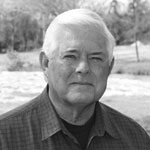
The first I heard of the Branch Davidians was when we had two congressional inquiries … driven by former Davidians who had reached out to [a Congressman in Waco] … the nature of the allegations were child abuse, involuntary servitude, civil rights violations. The first [hearing] was in 1982; the second ended about two weeks before the raid.
I was the supervisor in charge of the Austin and Waco area, and I’d assigned a young agent out of the Waco office to follow up on these allegations. The inquiry was conducted with the sheriff’s office, the McLennan County department of health and human services, and Child Protective Services. We were trying to get a sense of what this group was all about. We knew that [Koresh] was a very charismatic leader, and that he had somewhere around 100 to 150 willing participants.
The bottom line was that we came up with absolutely no substantive evidence that there was involuntary servitude, and the civil rights aspect with regards to child abuse and sexual exploitation was not within our jurisdiction unless it crossed state lines. We had confirmed some rumors that there had been some hand grenade hulls and suspicious chemicals. We got wind of that from the ATF when we brought what we knew to their attention. But we had no prior knowledge before February 1993 that the ATF was conducting a long-term investigation on this group. They soaked up what we gave them, but we got nothing in return other than silence.
[We learned that] the ATF was going to hit this place and execute a search warrant and arrest warrant on Howell because they believed there was a number of legal weapons that had been converted illegally to fire full automatic, in addition to hand grenade hulls that had been converted to live with explosive material inside.
For whatever reason, the ATF did not want the FBI’s help, involvement, or anything in this case. I offered to send a couple of my agents out during the raid and they turned that down. In hindsight, thank God [the FBI] weren’t there.
Ofelia
 I was in the church when it happened. The first thing I heard was the gunfire. And then everybody was carrying their guns. The first person I saw was David. He came to the door of the church and said ‘what are you people doing here? You all go to your rooms.”
I was in the church when it happened. The first thing I heard was the gunfire. And then everybody was carrying their guns. The first person I saw was David. He came to the door of the church and said ‘what are you people doing here? You all go to your rooms.”
My daughter’s room was on the second floor and I went up the stairs to find her. But I wasn’t scared. I don’t know why not. I was excited. It was happening—exactly as he had predicted.
Clive
 Bullets were coming into the building. I went running down the hall and saw Perry Jones crawling on his hands and knees saying he’d been shot … he said David had been shot too. I was expecting to see a bloodbath in the foyer but it was empty. Me and another guy took Perry into the men’s dormitory area and stuck him on the bottom bunk. Then I heard someone say Winston [Blake] was dead … so I made my way toward Winston’s room. I heard water running and that kinda puzzled me, but once I got there I could see all this water coming through the bullet holes in the water tanks outside his window. Apparently the helicopters had shot into the room, and Winston was laying on the floor.
Bullets were coming into the building. I went running down the hall and saw Perry Jones crawling on his hands and knees saying he’d been shot … he said David had been shot too. I was expecting to see a bloodbath in the foyer but it was empty. Me and another guy took Perry into the men’s dormitory area and stuck him on the bottom bunk. Then I heard someone say Winston [Blake] was dead … so I made my way toward Winston’s room. I heard water running and that kinda puzzled me, but once I got there I could see all this water coming through the bullet holes in the water tanks outside his window. Apparently the helicopters had shot into the room, and Winston was laying on the floor.
I tried to find a pulse in his neck, but I couldn’t find one. There was blood. They said he had been sitting on his bed eating french toast left over from breakfast. I was probably frightened, but I felt compelled to see what I could do to help whoever needed help. It kinda drove me.
Ofelia
 My daughter wasn’t in the room when I got there, but her kids were there. I went straight to the window to see what was going on outside and I saw the [ATF agents] coming out of the trailer. Some of them were shooting the dogs we had on the property and gunfire was coming from the helicopters above. God must have protected me because bullets were flying everywhere.
My daughter wasn’t in the room when I got there, but her kids were there. I went straight to the window to see what was going on outside and I saw the [ATF agents] coming out of the trailer. Some of them were shooting the dogs we had on the property and gunfire was coming from the helicopters above. God must have protected me because bullets were flying everywhere.
[The ATF later testified that no shots were fired from the helicopters]
Bullets came through the ceiling. My daughter had bunk beds for the kids, and I put my Bible on the top bed, and there was a hole in the Bible. I was in the room but didn’t get shot.
Clive
 In total, the shooting lasted two and a half hours or so. When I got down the hall, Wayne Martin was in the process of calling 911 and talking to Sheriff Larry Lynch. He was saying: “Tell them to call it off. Tell them to call it off.”
In total, the shooting lasted two and a half hours or so. When I got down the hall, Wayne Martin was in the process of calling 911 and talking to Sheriff Larry Lynch. He was saying: “Tell them to call it off. Tell them to call it off.”
Six Branch Davidians died and four ATF agents.
Byron
 I was at home. My wife, Cheryl and I had gotten up and were getting our boys ready to go to church. I was getting ready to jump in the shower when the phone rang. It was my boss in San Antonio, Jeff Jamar, the agent in charge of the entire division of which Austin and Waco are a part of. No introductory statement or anything. He just started by saying there was a raid that had gone horribly awry near Waco. Four agents were dead, 16 were wounded and three helicopters had been hit and were forced to land.
I was at home. My wife, Cheryl and I had gotten up and were getting our boys ready to go to church. I was getting ready to jump in the shower when the phone rang. It was my boss in San Antonio, Jeff Jamar, the agent in charge of the entire division of which Austin and Waco are a part of. No introductory statement or anything. He just started by saying there was a raid that had gone horribly awry near Waco. Four agents were dead, 16 were wounded and three helicopters had been hit and were forced to land.
My wife and I had been married for a number of years, so she was used to me heading off like this. I asked her to throw some clothes in a bag. I said, “This is a bad one, honey, you better put in three days worth.” Of course nobody had any idea it would be as long as it was or as deadly as it was. The radio station I was listening to was reporting a major gun battle outside of Waco. I had the red light and siren going for about 100 miles, and I arrived shortly after 11 a.m. I was vectored to saddle upside Larry Lynch [of the McLennan County Sheriff’s Office] in the basement of the Waco police department to help him start the negotiation process.
Larry had two lines going at once and was talking on a cell phone with David Koresh; while the second line was a 911 line on which he was talking to Steve Schneider and Wayne Martin [two other Davidians]. Larry looked over at me and recognized that the FBI was there. And of course he had seen all these ridiculous movies where when the FBI walks in they just take over. He literally gestured with the phones, “here, do you want these?” and I shook my head no.
He was doing a fantastic job. [The Davidians] had an advantage because they were in a position of tactical superiority—in the building, concealed and firing out the windows.
My first conversation with David was some time between 11:15 and 11:30.
It’s been nearly 20 years and just repeating that makes the hair stand up on the back of my neck.
The cease fire took place about 12:15 p.m.
Clive
 From then on, word went around that David wanted somebody permanently on watch because we didn’t know if they’d come back in and kill us all. I’m not sure exactly what day it was—whether it was that night or the next night—I was in the chapel and all of a sudden the whole building just started shaking. It felt like an earthquake almost. We opened up the windows of the chapel and saw this huge convoy coming down Elk Road: big trucks with trailers carrying tanks.
From then on, word went around that David wanted somebody permanently on watch because we didn’t know if they’d come back in and kill us all. I’m not sure exactly what day it was—whether it was that night or the next night—I was in the chapel and all of a sudden the whole building just started shaking. It felt like an earthquake almost. We opened up the windows of the chapel and saw this huge convoy coming down Elk Road: big trucks with trailers carrying tanks.
We had radios and pretty much everybody was listening to the news for a day or so, but they [the FBI] eventually cut the electricity. They cut the phones too. The only line out was directly to them.
As the siege wore on, there were efforts made to negotiate people out. We were told early in the siege that nobody was to just come out on their own and do their thing. It all had to be worked out over the phone. It started with the kids.
Byron
 In the early stages, there was an extremely heavy emphasis on David needing to get his biblical message out—that’s what we would refer to as a hook. It was a critical objective of his so we could exploit it. But trust me—you don’t want to debate theology with somebody who believes they are Christ. You’re never going to win.
In the early stages, there was an extremely heavy emphasis on David needing to get his biblical message out—that’s what we would refer to as a hook. It was a critical objective of his so we could exploit it. But trust me—you don’t want to debate theology with somebody who believes they are Christ. You’re never going to win.
David continued to send the children out, two at a time, through the 5th of March. We would have done anything we could to get all those kids out. By March 5th, we had got a total of 21 children out. … David was very quick to trigger anytime he talked to a female negotiator. He was a womanizer, and it would change his entire persona … one would jump on the line very briefly with David just to throw him off. It’s not uncommon to try to identify characteristics which you can exploit. In this instance the exploitation was to keep the pressure on him. To try to wear him down.
We asked David several times about the nature of his injuries and how he was feeling and he tried to milk it for all it was worth. He had received a gunshot wound to the lower left abdomen that had trailed around the outer edge of the hip bone and exited his left upper buttocks. It never punctured his abdominal wall. We asked them to send out videotapes of themselves. The first one is referred to as the ‘Koresh family video’—he is seen bouncing kids on his lap.
Watch CNN coverage during the half-hour raid on the compound. Source: CNN
We were still trying to get our heads around who we were dealing with as a person, as a personality. One of the people in the video was an attractive woman with long brunette hair who we identified as Judy Schneider, Steve Schneider’s wife [Steve Schneider was Koresh’s right-hand man]. Their marriage had been annulled back in the late ’80s, early ’90s by David, according to his ministry, and he took all these young attractive women to produce his offspring. Ultimately I think at first we underestimated the full extent of influence and control that David exerted over those people inside.
Clive
 David negotiated with the FBI that if he could make a tape of a sermon and they played it in prime time on the radio, we would all leave. We all expected to come out. We were told that David was in such bad shape that he would probably be carried out on a stretcher.
David negotiated with the FBI that if he could make a tape of a sermon and they played it in prime time on the radio, we would all leave. We all expected to come out. We were told that David was in such bad shape that he would probably be carried out on a stretcher.
Ultimately, I think 30 people came out over a period of a few weeks. They were then allowed to call back in [to Mt. Carmel] and let us know that they were okay. Then Livingston Fagan from England was sent out, and we were waiting for the phone call but there was dead silence; no announcement that another person had come out. So there was definite attitude developing among us that the FBI was not being on the up and up with us. The attitude then was that we’d just wait and see what God wanted; what He instructed us to do.
Byron
 As soon as Fagan came out, he was picked up by the hostage rescue team and had the most in-your-face attitude—defiant—and he immediately said to one of our operators that he wasn’t calling in to the compound; that he was not going to call in to David. In hindsight, in my estimation, he had come out to stem the flow of people that were ready to come out.
As soon as Fagan came out, he was picked up by the hostage rescue team and had the most in-your-face attitude—defiant—and he immediately said to one of our operators that he wasn’t calling in to the compound; that he was not going to call in to David. In hindsight, in my estimation, he had come out to stem the flow of people that were ready to come out.
Ofelia
 I don’t know the date, but sometime in the middle [of the siege] I was released. David asked me to go to see my mother. The oldest ladies were staying in a mobile home in Waco itself; they had lived there through the winter because it was very, very cold. I wanted to take my Bible with me, and David said it was a good idea, that I should take it as evidence because it had been shot up. When I got out the authorities took it away from me, and I never saw it again.
I don’t know the date, but sometime in the middle [of the siege] I was released. David asked me to go to see my mother. The oldest ladies were staying in a mobile home in Waco itself; they had lived there through the winter because it was very, very cold. I wanted to take my Bible with me, and David said it was a good idea, that I should take it as evidence because it had been shot up. When I got out the authorities took it away from me, and I never saw it again.
As for my daughter and my grandchildren, I wasn’t sure what would happen to them, but I had faith God would intervene and do something for them. My daughter encouraged me to go to be with my mother. She didn’t want to go with me and she didn’t want to let her kids go. I didn’t want to go either but I had to.
Byron
 It’s always been the FBI’s position that you never do a face-to-face negotiation with anyone that has demonstrated violence. Well here we had that in spades but we were willing to try anything we could to get this back on track. It was the 15th of March, and I would go to the compound with Jack Harwell, the Sheriff of McLennan County. The Branch Davidians had an inherent distrust of any federal agency, but they trusted Jack so we ended up meeting up with Steve Schneider and Wayne Martin about 30 yards out in front of the compound. We were both wearing body armor and heavy jackets. I think we still had hopes that David was going to come out, but he didn’t.
It’s always been the FBI’s position that you never do a face-to-face negotiation with anyone that has demonstrated violence. Well here we had that in spades but we were willing to try anything we could to get this back on track. It was the 15th of March, and I would go to the compound with Jack Harwell, the Sheriff of McLennan County. The Branch Davidians had an inherent distrust of any federal agency, but they trusted Jack so we ended up meeting up with Steve Schneider and Wayne Martin about 30 yards out in front of the compound. We were both wearing body armor and heavy jackets. I think we still had hopes that David was going to come out, but he didn’t.
We got every single one of those documents … and Steve came on the phone. He was very cordial. But he told me to just drop them off like we’d done before—that David didn’t think we needed to meet again.
I hadn’t been home during the entire siege, which in hindsight was a mistake. I was fatigued emotionally, psychologically, physically. We were at an impasse—waiting for David to write out his manuscript of his meaning of the Seven Seals, yet another delaying tactic. So I decided to drive home for the day on the 18th. I barely got in the door when I got a call from the on-site commander saying they were going in—that they had authorization for the tear gas plan and were going to move forward with it the next day.
“The skin was rolling off my hands and my jacket was smoking and melting.”
We knew we would be introducing tear gas into an environment where children were. That did not please any of us, but the fact of the matter is if you put tear gas in this room where we are now and my kids or my grandkids were here, I would make a hole in that wall to get them into a position of safety. We had a huge red cross flag set up as an identifier for them for medical treatment available to them if anybody had problems with their eyes.
I called into the compound just after 6 a.m. [on the 19th April]. Steve Schneider came on the line, and I told him we were preparing to introduce tear gas into the building.
Clive
 It was probably around 6 o’clock in the morning when the loud speaker they had out front started telling us that the siege was over; that they were about to start gassing the building. Those of us that were awake started waking everybody else up, and I remember Steve yelling out to put gas masks on. My gas mask didn’t do a whole lot of good because it blocked up in a really short time.
It was probably around 6 o’clock in the morning when the loud speaker they had out front started telling us that the siege was over; that they were about to start gassing the building. Those of us that were awake started waking everybody else up, and I remember Steve yelling out to put gas masks on. My gas mask didn’t do a whole lot of good because it blocked up in a really short time.
I could hear the building breaking up and the crackling of the wood being smashed; the engines of the tanks and the firing of the ferret rounds.
Byron
 They didn’t get 20 yards inside the Branch Davidian property when all hell broke loose. Gunfire began erupting from multiple positions. It was still dark out and I could see muzzle flashes from all over the compound. The rounds flying off the armored vehicles lit them up like sparklers. They continued down the driveway and I went back to start my broadcast: advising the Davidians we were in the process of introducing tear gas into the building. “You’re under arrest,” I said. “This siege is over. We are not coming into the building.”
They didn’t get 20 yards inside the Branch Davidian property when all hell broke loose. Gunfire began erupting from multiple positions. It was still dark out and I could see muzzle flashes from all over the compound. The rounds flying off the armored vehicles lit them up like sparklers. They continued down the driveway and I went back to start my broadcast: advising the Davidians we were in the process of introducing tear gas into the building. “You’re under arrest,” I said. “This siege is over. We are not coming into the building.”
Within 45 minutes they weren’t even using the gas masks anymore. The tear gas was ineffective and did not have the motivational impact we had hoped it would have. Needless to say, they didn’t come out. I turned around and looked at the live feed, by this time it’s about 12:07, and I start to see those first wisps of smoke.
Clive
 At about noon somebody yelled out that the building was on fire. Those of us still in the chapel went up on stage and through a little doorway, and we noticed that behind the partition was a hole that a tank had made in the wall. So I went in there with some others and I remember kinda discussing “do you think they’ll shoot us if we jump out of this hole?” We knew there were sniper nests all around us. There were probably about 10 guys who ended up crowding in behind me in the partition. And I remember all of a sudden all this smoke came in.
At about noon somebody yelled out that the building was on fire. Those of us still in the chapel went up on stage and through a little doorway, and we noticed that behind the partition was a hole that a tank had made in the wall. So I went in there with some others and I remember kinda discussing “do you think they’ll shoot us if we jump out of this hole?” We knew there were sniper nests all around us. There were probably about 10 guys who ended up crowding in behind me in the partition. And I remember all of a sudden all this smoke came in.
Byron
 I went off script. Now it was a plea: David, don’t do this. I changed from steadfast, regimented instructions to pleas. “David,” I said. “You claim to be a Messiah. A Savior. Save those people, bring them out.” The wind gust was up to around 35 knots, so it was like a wind tunnel in there and the building was made of used lumber. So that fire just took off like a shot. The arson investigators later estimated there were three points of origin: one near the southwest corner, one back toward the gymnasium and one toward the kitchen area.
I went off script. Now it was a plea: David, don’t do this. I changed from steadfast, regimented instructions to pleas. “David,” I said. “You claim to be a Messiah. A Savior. Save those people, bring them out.” The wind gust was up to around 35 knots, so it was like a wind tunnel in there and the building was made of used lumber. So that fire just took off like a shot. The arson investigators later estimated there were three points of origin: one near the southwest corner, one back toward the gymnasium and one toward the kitchen area.
Clive
 I looked back out the hole again and about the time I did, all this smoke came down from the side of the building, from the front. It was coming down the outside wall. When it got to the hole, it got sucked in and everything pretty much turned black.
I looked back out the hole again and about the time I did, all this smoke came down from the side of the building, from the front. It was coming down the outside wall. When it got to the hole, it got sucked in and everything pretty much turned black.
Ofelia
 I was in custody when the fire happened. I saw it on TV. I never was scared. I’m more scared now, talking about it. But I wasn’t scared then. My mind was always positive. I thought, well, I was hoping for the best, but my positive thoughts comforted me. The Holy Spirit comforted me. What comforted me was that they were going to be saved. Then I just thought they would have died before they were burned and this comforted me. Of course I got upset but I wasn’t depressed. I knew there was nothing I was able to do.
I was in custody when the fire happened. I saw it on TV. I never was scared. I’m more scared now, talking about it. But I wasn’t scared then. My mind was always positive. I thought, well, I was hoping for the best, but my positive thoughts comforted me. The Holy Spirit comforted me. What comforted me was that they were going to be saved. Then I just thought they would have died before they were burned and this comforted me. Of course I got upset but I wasn’t depressed. I knew there was nothing I was able to do.
My daughter was 30 when she died. Her children—my grandchildren—also died. Audrey was 13. Abigail was 11. Joseph was 8. Isiah was 4. And the little one, Crystal was 3.
According to the Report to the Deputy Attorney General on the Events at Waco: Juliette Martinez, Ofelia’s daughter, died of smoke and carbon monoxide inhalation. Her body was found inside the bunker. She was identified from dental records and fingerprint comparisons. She was 30.
Joseph Martinez died of smoke and carbon monoxide inhalation. His body was found inside the bunker. His body was identified from dental records. He was 8 years old.
Audrey Martinez was buried alive inside the bunker. She died of suffocation. She was identified from dental records. She was 13 years old.
Abigail Martinez died of a gunshot wound of the head. Her body was found inside the bunker. She was identified from dental records. She was 11 years old.
Several bodies discovered at the compound were unidentified.
Byron
 The fire continued to burn and at about 12:35 p.m. the central tower imploded and fell into the flames. This was a pivotal point for me. There were a couple of people still on the roof and the [FBI agents near the building] were addressing these people. The last thing they needed was all that noise from me broadcasting over the speakers. So I turned off the speakers and by doing that I officially ended the 51 days of committed effort to get those people out safely. I called in to the on-scene commander and advised him that I had terminated the negotiations effective 12:35. Then I walked outside. I was just totally completely drained, but I was still praying that I’d see a bunch of kids standing off in a corner or something.
The fire continued to burn and at about 12:35 p.m. the central tower imploded and fell into the flames. This was a pivotal point for me. There were a couple of people still on the roof and the [FBI agents near the building] were addressing these people. The last thing they needed was all that noise from me broadcasting over the speakers. So I turned off the speakers and by doing that I officially ended the 51 days of committed effort to get those people out safely. I called in to the on-scene commander and advised him that I had terminated the negotiations effective 12:35. Then I walked outside. I was just totally completely drained, but I was still praying that I’d see a bunch of kids standing off in a corner or something.
I was stunned. I couldn’t believe what I was seeing. Jeff walked up to me, put his hand on my shoulder and said: “Well, negotiations are over. You’ve got the crime scene.” And he left.
Clive
 But as I moved away from the building I looked to my right and saw four guys walking up the driveway.
But as I moved away from the building I looked to my right and saw four guys walking up the driveway.
At the hospital in Dallas, they told me two women from Mt. Carmel had also been brought in. So that gave me more hope for a while. But it was short-lived.
Ofelia
 I thought it was prophetic that we’d go to jail for our beliefs, but I was always trying to be positive. I was charged with manslaughter but they dropped the charges.
I thought it was prophetic that we’d go to jail for our beliefs, but I was always trying to be positive. I was charged with manslaughter but they dropped the charges.
I can tell you I never doubted anything. I believe that I’m in the Kingdom of God here [Ofelia is still living in Waco, on the same property where the Davidian siege happened]. And oh yes, I’ll see them all again soon. Very soon.
The people who died are martyrs. Even my daughter and her kids. The kind of government we have, it’s so unjust in the way they go about things. I don’t know how to explain. I think public sympathy is with us. They owe me an apology, but I don’t think I’ll ever get one.
Top photo courtesy Wikipedia.
